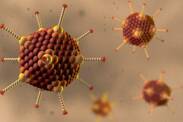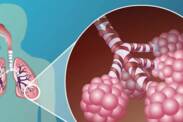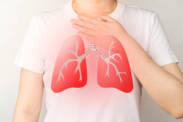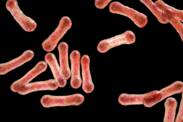Respiratory system disorders
Respiratory system disorders include
- Upper respiratory tract disorders
- Lower respiratory tract disorders
- The category you were looking for was not found. Please try another one.
- List is empty.

Adenovirus infection
Adenoviruses cause mainly acute respiratory diseases in humans. However, they can attack various body systems. What is an adenovirus and how is the disease transmitted? What is the appropriate treatment and preventive measures?

Bronchial asthma
Bronchial asthma is a chronic inflammatory disease of the lower respiratory tract . Bronchial hyperresponsiveness is caused by external and internal factors. It is manifested by paroxysmal airway obstruction with respiratory disorders, even asphyxiation .

Bronchitis
Everyone of us has encountered bronchitis. Let's look at the causes and symptoms of the disease.

Pulmonary disease
Chronic obstructive pulmonary disease is a disease of the lung tissue. Various insults, most often cigarette smoke, are involved in its formation. The disease develops over a long period of time, with lung damage persisting with a tendency to progress. It cannot be cured, the treatment is only supportive.

Inflammation of the nasopharynx - pharyngitis
Pharyngitis is a very common respiratory disease, especially in children. What are the causes of pharyngitis?

Laryngeal Cancer
Laryngeal cancer is one of the most dangerous cancers that can affect the human body. It is a malignant type of cancer arising directly from the lining of the larynx.

Lung cancer
What is lung cancer? How do the lungs work? Do you know the symptoms of lung cancer?

Pneumonia
Pneumonia is an inflammatory disease characterized by lung tissue damage. Depending on the origin of the disease, this inflammation can take both an infectious and a non-infectious form.

Pneumothorax
Pneumothorax means the intrusion of air into the pleural cavity of the chest. It leads to the collapse of the lungs and impaired breathing. Why does pneumothorax occur and how does it manifest itself? How to give first aid?

Sarcoidosis
Sarcoidosis is the name for a rare disease affecting various organ systems. Why does this rare disease occur and what symptoms characterize it?

Sinusitis
Sinusitis is an inflammation of the sinuses. It often occurs alongside a cold or tonsillitis. It is usually caused by viruses and bacteria.

The common cold
The common cold is a very common disease of the upper respiratory tract that is not serious, although, even colds should not be underestimated. It is an acute viral infection that causes inflammation as well as an inflammation of the mucous membrane of the nasal cavity (mucosa), mainly characterised by swelling of the mucosa, the formation of mucus and nasal congestion. This results in typical symptoms. However, sometimes rhinitis can also occur due to an allergic reaction.

Tuberculosis of the lungs - TB
Tuberculosis is one of the most feared infectious diseases. It mainly affects the lungs. How does it manifest itself? What are its causes? What is the contagiousness of tuberculosis and how is it transmitted?

Diphtheria
Diphtheria is an acute infectious disease primarily affecting the upper respiratory tract. It is a worldwide disease, but its incidence has been significantly reduced by vaccination. Why does diphtheria occur and how does it manifest itself? What is the current situation worldwide?

Mor
What is MOR and how is it transmitted or manifested? Its occurrence in the world today and in the past.

Whooping Cough
Whooping cough starts subtly and lasts a long time. It affects children and adults alike. What are its symptoms, treatment and consequences, and prevention?









